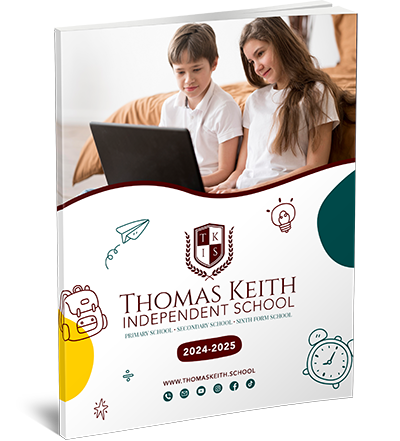
What Is A Sentence in KS1
What Is A Sentence in KS1
The building blocks of language are sentences, which enable us to share ideas, ask questions, and express our views. For pupils in Key Stage 1 (KS1), one of the first steps to language mastery is comprehending sentences. Children start to construct sentences at this age, identify different sentence structures, and comprehend the significance of punctuation. An example of how independent online schools like Thomas Keith are making sentence learning more approachable and interesting is given in this guide, which covers all the information young students need to know about sentences in KS1.
What Is A Sentence Understanding in KS1
According to KS1, a sentence is any collection of words that make sense when taken as a whole. Children benefit from using sentences to describe demands or feelings as well as clear concepts and comprehensive thinking. Understanding sentence components, such as nouns, verbs, and punctuation, is essential for early learners’ growth in both reading and writing.
Important Sentence Elements in KS1
The fundamentals of sentence form are taught to kids in KS1. They learn the following crucial elements:
The “who” or “what” that the statement is about is the subject.
Verb: The subject’s action is indicated by a verb.
Object (Optional): The verb’s action is transferred to an object in certain sentences.
A sentence’s punctuation consists of a capital letter at the start and a full stop, question mark, or exclamation point at the end.
As an illustration:
The cat is asleep. (The verb is, the subject is the cat.)

Sentence Types for Students in KS1
In KS1, students are exposed to four primary sentence forms, each with a distinct function:
Sentences that provide details or convey an idea are called statements.
The dog is barking, for instance.
Questions: These phrases request details.
Where is your book, for instance?
Commands are phrases that provide guidance.
Close the door, for instance.
Expressions of intense emotion or excitement are known as exclamations.
As an illustration: What a lovely day!
Students in KS1 gain an understanding of these sentence forms and how to successfully express themselves through language.
Creating Sentences in KS1: A Comprehensive Guide
Teachers at private schools like Thomas Keith frequently employ the phases involved in sentence construction to help children’s language development.
Step 1: Begin by using basic sentences
Children begin with simple sentences in KS1 that have a subject and a verb. Sam, for instance, leaps. To assist pupils in organically grasping grammar, teachers encourage their students to construct sentences based on what they observe or experience.
Step 2: Add descriptive words
As they develop, kids learn how to use adjectives to enhance the descriptiveness of their sentences. The blue cat sleeps, for instance.
Step 3: Combine Sentences
Children learn to connect concepts using conjunctions like and, but, and because once they are at ease with simple sentences. By forming compound sentences, they can express themselves more fully.
![]()
Why Sentence Understanding Is Important in KS1
Clear communication, writing abilities, and reading comprehension all depend on KS1 students mastering sentence structure. Young pupils who can construct and comprehend sentences can:
Communicate Your Ideas Children who can form sentences are better able to express themselves.
Read with Confidence: Children who comprehend sentence kinds are better able to comprehend what they read since they can identify well-known structures.
Develop Your Writing Skills As Students Advance in Their Education, Sentence Structure Is Crucial for Academic Assignments and Creative Writing.
For KS1 pupils, online independent schools such as Thomas Keith offer an organised and stimulating setting for learning sentence construction through interactive sentence-building tasks and visual assistance.
How the Thomas Keith Online Independent School Aids in the Learning of KS1 Sentences
Leading an Thomas Keith Independent Online School provides KS1 language programmes that are specifically made to make studying sentences interesting and successful. Through the use of multimedia tools, interactive teaching, and tailored feedback, Thomas Keith makes sure that young students understand the foundations of sentence form in a meaningful way.
Novel Approaches to Teaching
Games, storytelling, and sentence-building activities are all incorporated into Thomas Keith’s KS1 online classes. This gives pupils an enjoyable and accessible framework in which to learn and apply sentence principles. In a class, for instance, students might be asked to detect punctuation in a story or arrange words to construct sentences.
An adaptable learning environment
Children may learn at their own pace because of Thomas Keith’s flexible online learning environment. In a stress-free setting, students can practice sentence construction with interactive exercises and real-time teacher feedback, encouraging a positive attitude toward language acquisition.
How Parents Can Encourage Sentence Learning at Home
Helping your child memorise sentences at home can help them retain what they’re learning in school or via online resources like Thomas Keith. Here are some easy methods to assist:
Read Together Every Day: Children learn to recognise various sentence structures through reading stories, which also motivates them to utilise sentences in their speech.
Encourage your child to explain what they see, hear, or do by asking them to use descriptive language. Encourage them to improve their descriptive skills by using whole phrases.
Practice Sentence Games: Easy games that involve building sentences out of word cards can add enjoyment and interaction to the process of learning sentences.
In conclusion
In KS1, sentence comprehension is a crucial component of language development. With the help of structured instruction, interesting activities, and encouraging settings such as Thomas Keith’s online independent school, young students can confidently grasp the fundamentals of sentence form. This sentence structure enables kids to speak more effectively, enhances their reading comprehension, and establishes the framework for more complex language abilities.
FAQs
Q1: What does a KS1 sentence mean?
A sentence in KS1 is a collection of words that flow naturally together and often contain a subject and a verb. Sentences can be used to convey excitement, an order, a query, or an idea.
Q2: What kinds of sentences are taught in the first grade?
A: In KS1, kids are taught four different sentence forms: commands, exclamations, questions, and statements.
Q3: What benefits does Thomas Keith’s online education offer for learning sentences?
A: To make learning engaging and accessible, Thomas Keith employs interactive lessons and real-time feedback to assist KS1 children in comprehending and constructing sentences.
Q4: What can I do at home to help my child learn sentences?
A: You may help your child develop their sentences by reading aloud to them, playing games that require them to construct sentences, and promoting the use of descriptive language.
Q5: What is teaching sentences to KS1 pupils important?
A: Students in KS1 benefit from learning about sentences since it enhances their ability to read, communicate, and lay the groundwork for future writing abilities.
Q6. What is a sentence?
A sentence is a group of words that express a complete thought. It must have a subject (who or what the sentence is about) and a predicate (what the subject is doing).
Q7. Can a sentence be just one word?
Yes! A sentence can be just one word, like “Run!” or “Stop!” These are called imperative sentences, and they still express a complete thought.
Q8. What does it mean when a sentence has a capital letter and a full stop?
A sentence begins with a capital letter and ends with a punctuation mark, like a full stop (.), question mark (?), or exclamation mark (!). This helps show that the sentence is complete.
Q9. What is a simple sentence?
A simple sentence has just one independent clause (one subject and one predicate). For example, “The dog runs.”
Q10. What is a compound sentence?
A compound sentence has two independent clauses joined by a conjunction like and, but, or so. For example, “The dog runs, and the cat jumps.”
Q11. Can a sentence be a question?
Yes, a sentence can be a question. A question sentence asks something and usually ends with a question mark. For example, “Where is my book?”
Q12. What is a subject in a sentence?
The subject is the part of the sentence that tells you who or what the sentence is about. In “The dog runs,” the subject is “The dog.”
Q13. What is a predicate in a sentence?
The predicate is the part of the sentence that tells what the subject does. In “The dog runs,” the predicate is “runs.”
Q14. Can a sentence have more than one subject?
Yes! A sentence can have more than one subject. This is called a compound subject. For example, “Tom and Jane are playing.”
Q15. Why do we use punctuation in a sentence?
Punctuation helps to make sentences clear and understandable. It tells the reader where a sentence ends or if it’s a question, an exclamation, or a statement.
Q16. What is a question sentence?
A question sentence asks for information and always ends with a question mark (?). For example, “What is your name?”
Q17. What is an exclamation sentence?
An exclamation sentence shows strong feelings and ends with an exclamation mark (!). For example, “Wow, that’s amazing!”
Q18. What is a negative sentence?
A negative sentence tells you that something is not happening. It often uses words like “not” or “no.” For example, “The dog is not barking.”
Q19. How do you know when a sentence is complete?
A sentence is complete when it has both a subject and a predicate and expresses a complete idea. It also starts with a capital letter and ends with punctuation.
Q20. Can a sentence have more than one verb?
Yes, a sentence can have more than one verb. This happens when two or more actions are happening. For example, “She runs and jumps.”







